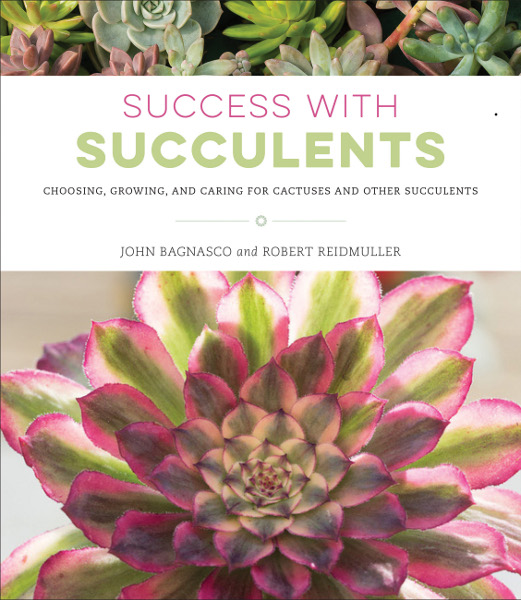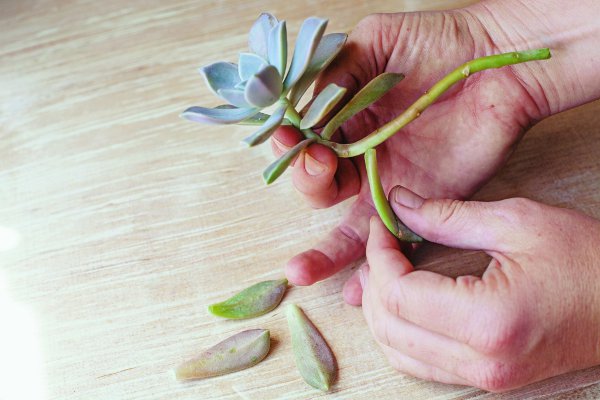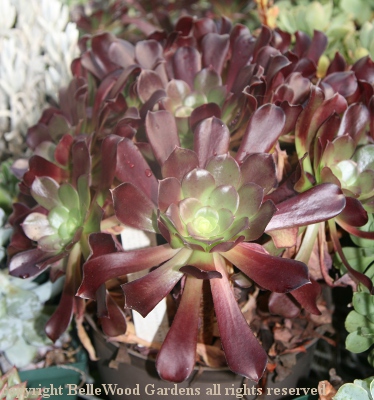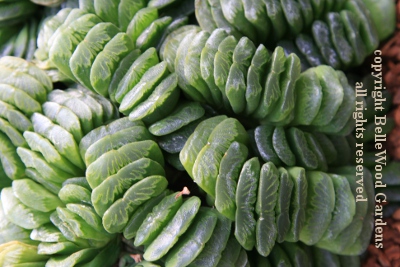
.
If you have any comments, observations, or questions about what you read here, remember you can always Contact Me
All content included on this site such as text, graphics and images is protected by U.S and international copyright law.
The compilation of all content on this site is the exclusive property of the site copyright holder.
Wednesday, 28 March 2018
Succulents are gaining in popularity, as may be gathered
from the recent succulents events at Wave Hill.
Now there's a book to help you get started at home.
Some people are successful at killing houseplants. Maybe they water them too much, or not enough. It could be as simple as spilling water on the fuzzy leaves of African violets, which then rot. They put the pots in a drafty place, or over a heat vent, or, or, or something. "Oh," they tell me with a sigh, "I guess I just have a black thumb." Then go and buy another plant that will be sent to that great compost heap in the sky. What they really need are succulents, forgiving plants with a wide range of attractive options that tolerate some abuse (and do even better when properly cared for.) Need some hand-holding? "Success with Succulents" is a pleasant book to get you started, and keep you going too.

Being married to an engineer means discussion may begin with "First, define your terms." So what's a succulent, and is it different from a cactus. This is where "Success with Succulents" begins. All are succulents, storing moisture in their roots, stems, and / or leaves, the authors inform us, but not all succulents are cactuses, which have prickles. They go into more detail but basically that's it. Well illustrated, and for the botanically curious, there's information about the different cactus genera and lists of different succulents. Their botany is more complex. Numerous images in this section will whet your appetite to obtain some of these rosette formers, trailing creepers, crawlers, and trailers, others that look like stones but are actually living plants.
I know I started off by mentioning house plants. In parts of California, Arizonia, and other places with a Mediterranean climate (frost-free, warm to hot, with dry summers, winter rain) cactuses and succulents are popular garden plants. There are even natives among them. A few succulents, like the many different hen-and-chicks houseleeks, and even some Opuntia, cactuses, can live outdoors in cold winter areas if they have good drainage at that time of year.

An opuntia flowering in a New Jersey garden, in June.
Indoors, though, freezing conditions are not going to be an issue. As gardeners, the concerns will be sunlight, and watering. Succulents need more water when in active growth than when dormant. But, the authors warn us, more succulents are killed by over-watering than not. A lovely tip to check if your plant needs water - cut a basic, restaurant-style wooden chopstick or a bamboo skewer a little taller than the pot, and push it all the way to the bottom. Water, wait a few days, pull it out and check where the soil is still moist. If it's damp anywhere from halfway down the container it's time to water again. Simple, handy tips like this good suggestion take some of the guesswork out of caring for your plants.
Rest assured that there are options, if you thought succulents can only thrive if you have a south facing window. There are some that are happy in an east facing situation, or across the room from a sunny window. The authors reccommend haworthias, gasterias, and gasteraloes. And sansevieria, one of the best for lower light conditions. Forget that mother-in-law's-tongue limping along in a dim barbershop window. With better care they'll do better, and look a whole lot nicer too.
What type of pot? Clay, plastic, plain, decorated - options and possibilities. Drainage is important so they must all have a hole in the bottom. Potting soils and their components are explained in some detail. Coping with insect pests.

Photographer credit Rebecca Eichten. Image provided by Quarto Publishing
An excellent section on propagation - from seeds, by division, from stem cuttings, from a leaf (in some cases those plump juicy succulent leaves can make a whole new plant!) And this is just the first half of the book.
The second half features what the authors name as the 100 top choices of cactuses and succulents, from Adenium to Trichocereus by way of Crassula and Echevaria, Haworthia, Opuntia, and more. One, sometimes two to a page, all with a picture, information about origin, culture, cold hardiness, propagation, and bloom time. Some you'll recognize as familiar potted plants though perhaps unaware that they are succulents, such as peperomia, or without knowing their Latin names, such as rosary vine or string of hearts, Ceropegia woodii. Authors choices, of course, but I'm puzzled at some. Graptopetalum gets a full page picture as "excellent hanging subjects" but is not one of the 100 top choices which includes eight different echevaria. Whatever. There's something for every interest, from cactuses and succulents grown as individual potted specimens to community pots with a thriller, a filler, and a spiller. Pitaya, whose fruit you may have seen in the supermarket as dragon fruit. For Baja California gardens, 60 foot tall elephant cactus. A good book for beginners, and with enough to interest the somewhat more adventuresome succulent grower.
Some attractive succulents to attract even more of your attention
 .
. 
On the left, an Echevaria with caruncles, warty lumps and bumps, and
on the right, an Aeonium arborescens 'Zwartkop'.
 .
. 
On the left, a Haworthia, with translucent "windows"
that allow light into the buried leaves of this desert plant
and on the right, a variegated dwarf agave, or century plant
Published by Cool Springs Press, 2017
ISBN: 978-0-7603-5358-5, Soft cover, $24.99
A review copy of this book was provided by the publisher.
Back to Top
Back to Book Reviews 2018
Back to March 2018
Back to the main Diary Page